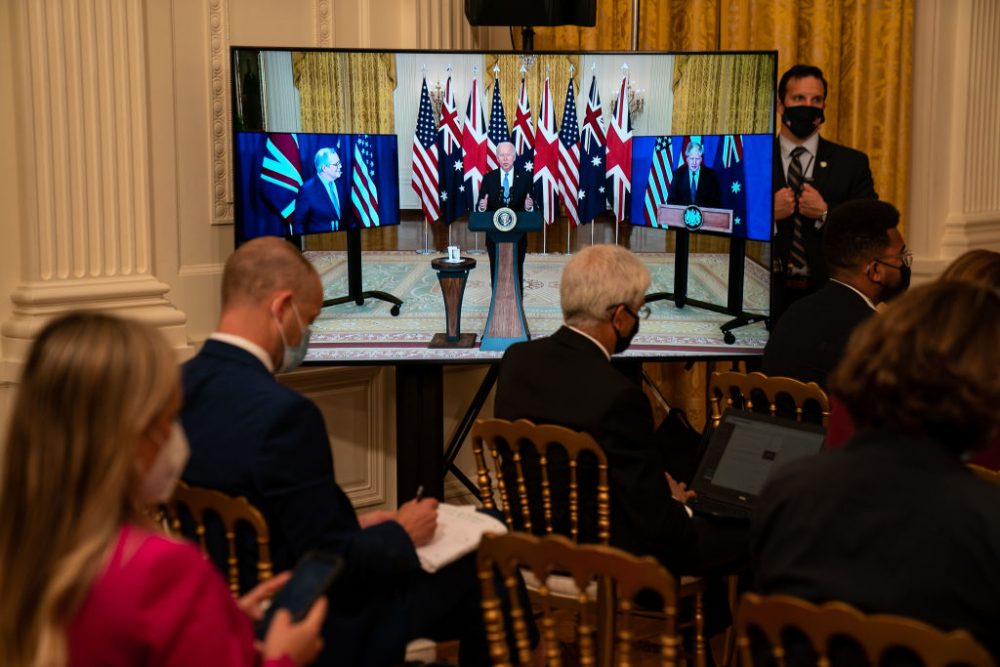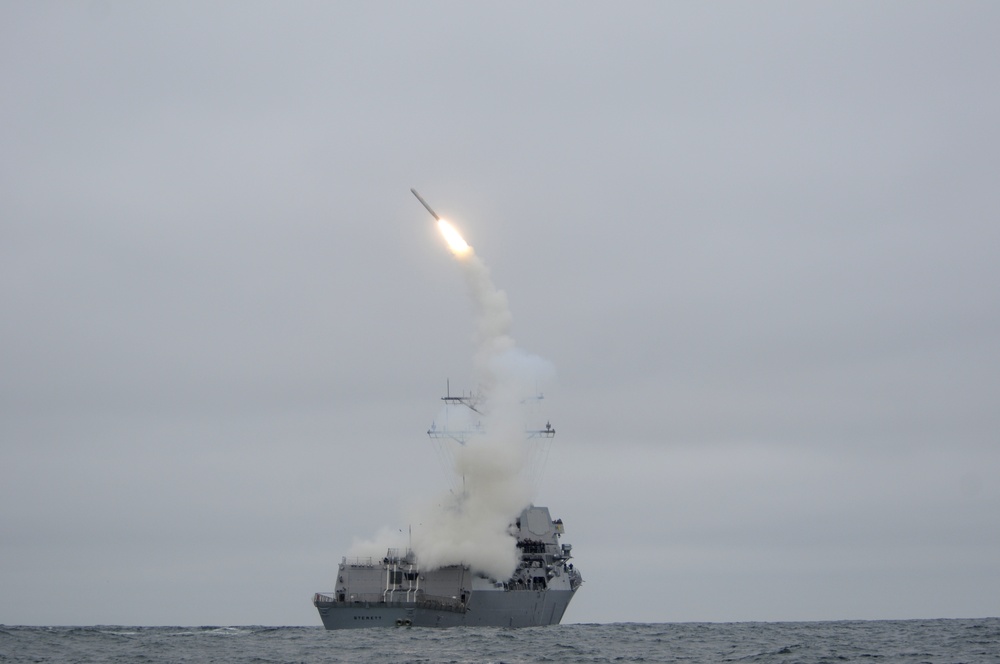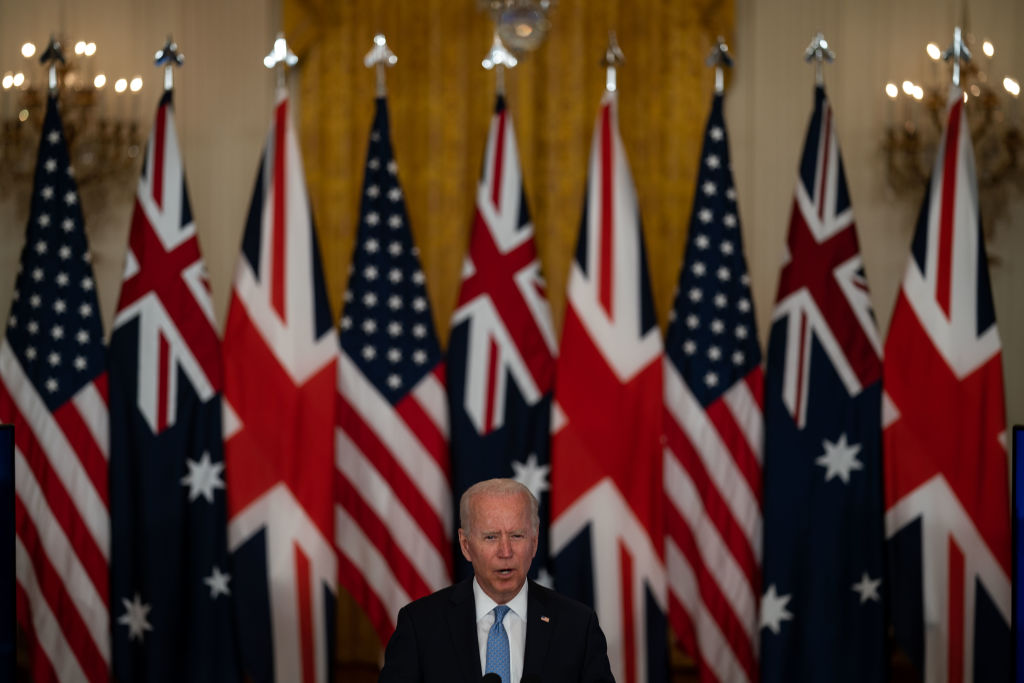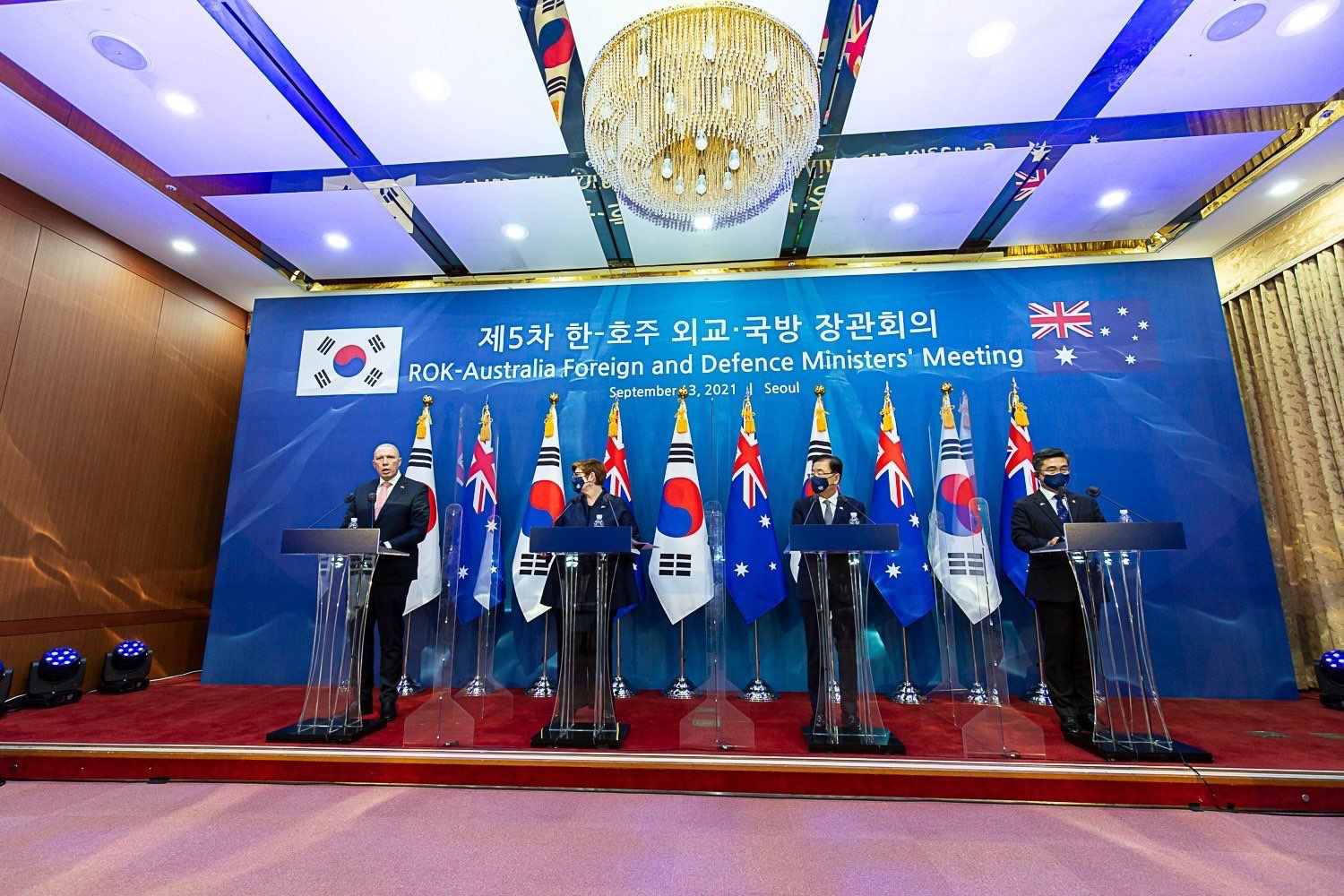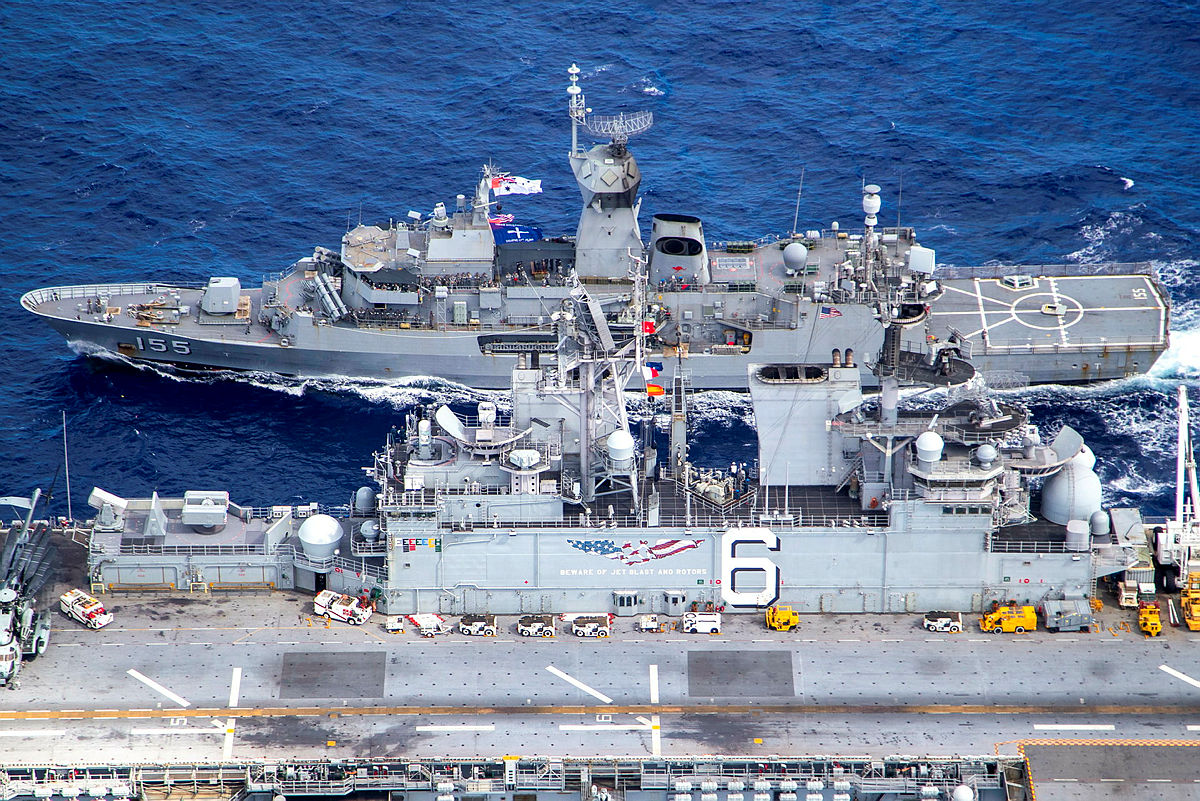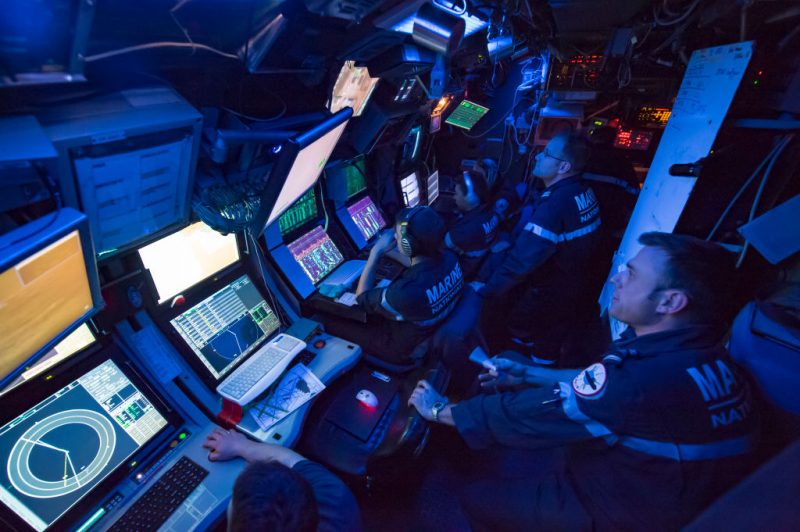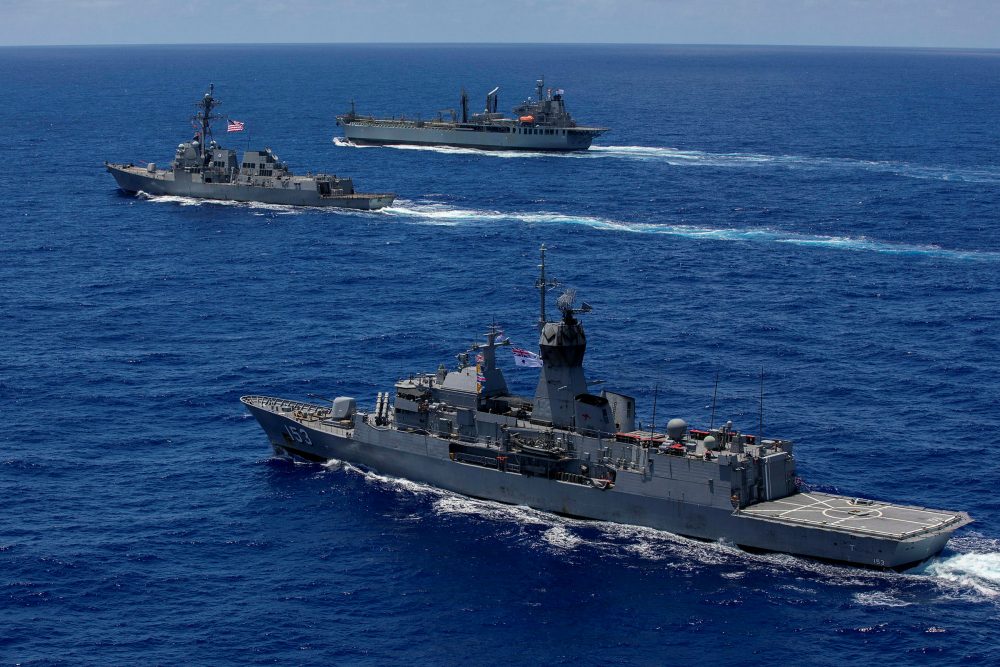Has Jokowi fallen for Putin’s line on Russia’s benign utility to Indonesia?
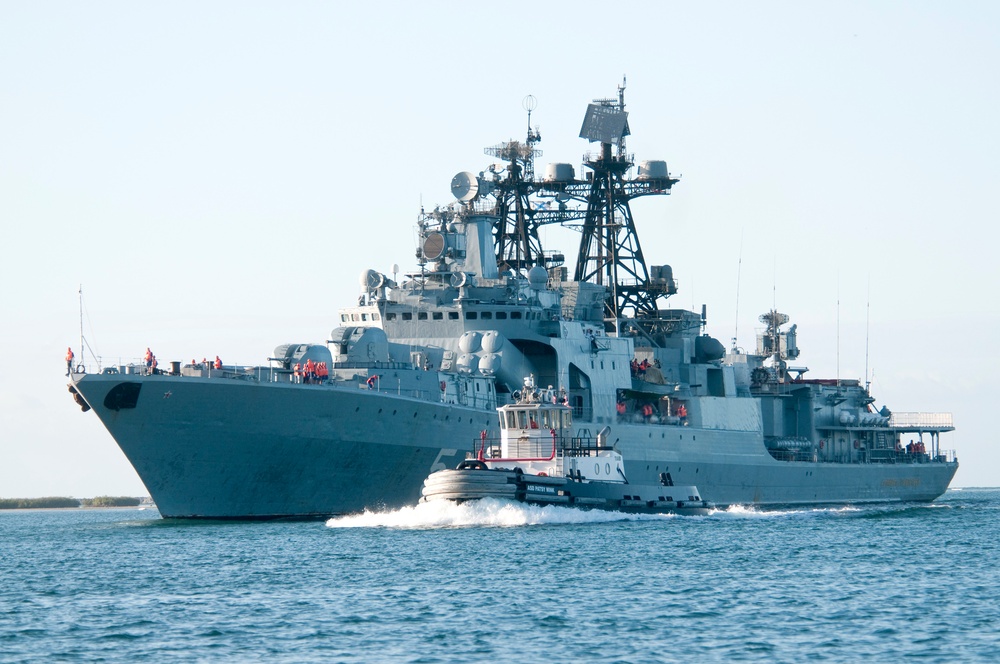
If the Australian government is serious about tackling trolls, it may need to start giving some thought to the latest effort of Russian President Vladimir Putin and what it says implicitly about Australia’s standing in parts of Southeast Asia.
Labelling Putin’s decision to send a dedicated anti-submarine destroyer, the Admiral Panteleyev, to participate in the first-ever ASEAN–Russia joint maritime exercise as trolling might be jumping to conclusions. The vessel might well have been the best option available from among Russia’s Pacific Fleet for the three-day drills held in Indonesian waters off Sabang, Aceh, this week. The exercise, which Indonesian Defence Minister Prabowo Subianto was reportedly to launch from the Admiral Panteleyev’s deck, is presumably the latest iteration of a series that has seen vessels from the likes of China and the United States stage similar drills with ASEAN-badged flotillas in recent years.
That said, it’s tempting to interpret the selection of an anti-submarine destroyer for an exercise ostensibly to ‘ensure the safety of maritime economic activity and civil navigation’, as Russia’s embassy to ASEAN put it, as a Putinesque taunt given the context in which it was made. This was the 28 October ASEAN–Russia summit, the official communiqué of which ‘encouraged the conduct of joint ADMM-Plus [ASEAN Defence Ministers’ Meeting Plus] exercises amongst our militaries to build trust and confidence and to enhance our capability in addressing common security challenges’.
More to the point, the summit came on the back of the announcement in September of Australia’s plans to acquire nuclear-powered submarines (SSNs) under the new AUKUS pact, a development that some in ASEAN have welcomed but about which others, most notably Indonesia, have expressed serious concerns. Central to Jakarta’s concerns are a perceived threat to the integrity of the Nuclear Non-Proliferation Treaty and the risk of Australia’s planned acquisition causing a regional arms race.
Indonesia’s president, Joko Widodo, reprised the argument that sharpening strategic rivalries were leading to an ‘arms race and power projection’ in his address to the summit. Were this trend to continue, Jokowi reportedly warned, the prospects for a ‘proxy occurrence’ would be ‘very large’. ‘We have to prevent it and avoid it,’ he said, since ‘none of us want to see this situation continue.’
Russia, Jokowi argued, promised to be important in mitigating this risk.
‘I believe that the ASEAN–Russia strategic partnership can prevent this trend,’ he said, and ‘must continue to be a “positive force” and a buffer of stability and peace in the region. The parties’ cooperation would strengthen strategic trust and eliminate the trust deficit. This will be Russia’s major contribution in maintaining stability, peace and prosperity in the Indo-Pacific region.’
For his part, Putin saw a commonality in Russia’s and ASEAN’s positions on ‘major world and regional issues’. ‘What is important,’ he reportedly stressed to his ASEAN counterparts, ‘is that we all support equal and mutually beneficial cooperation in the vast Asia–Pacific region.’
For the time being, Russia remains the largest supplier of arms to Southeast Asia, so in this respect its cooperation has brought certain benefits. In the case of Indonesia specifically, the ties extend way back to the days of Sukarno’s dealings with the Soviet Union, provoking more than a little angst in Washington and Canberra at the time. And Russia has been among the prospective suppliers of advanced weaponry such as fighter jets that Prabowo has been exploring since his elevation to the defence portfolio.
Russia also offers ASEAN states the comfort of having another major external actor in the region pledging support for ASEAN’s ‘centrality’ and symbolically treating the South China Sea as part of the global commons rather than a prospective Chinese lake.
But that Jokowi (and others) should see Putin’s Russia in such ‘positive’ terms as a regional actor performing the role of a ‘buffer of stability and peace’ seems exceptionally generous, if not disconcertingly curious. Likewise, given Moscow’s actual behaviour elsewhere in the world, observers could be forgiven for wincing at the summit communiqué’s reference to both sides’ reiteration of the importance of the ASEAN outlook on the Indo-Pacific and its principles of ‘a rules-based framework’, ‘respect for sovereignty’ and ‘respect for international law’.
One explanation for Jokowi’s generosity of spirit presumably lies in his apparent hope that Russia will contribute tangibly to the region’s (and specifically Indonesia’s) development. How an economically stretched Russia might do this, however, is much harder to see than is the case for China, the US, Japan and others in the region, aside from its delivering on promises to expand collaboration on producing its Sputnik Covid-19 vaccine in some Southeast Asian states.
Jokowi’s implicit characterisation of Russia as a neutral player in the great-power rivalries that so worry him also looks naive at best in light of the Admiral Panteleyev’s task immediately preceding its activities off Sumatra. This entailed a joint maritime patrol exercise with China, in which a combined Sino-Russian fleet made a point of circumnavigating Japan. Although the Chinese Ministry of Defence was at pains to claim that the exercise was ‘not targeted at any third parties’, China’s Global Times was far less coy about reporting a ‘Chinese military expert’ describing what took place as ‘a warning to Japan as well as the US’.
Naivety is not a word that springs to mind when pondering Putin. His form would instead suggest that, as he reflected on Jokowi’s thinly veiled allusions to AUKUS submarines, he found the idea of sending to Aceh a warship dedicated to sinking them too delicious to pass up.
Anti-submarine warfare training is, of course, most unlikely to have anything to do with the joint exercise. And no one should draw too many conclusions about Russia’s role in the region’s strategic future based on such an activity and the diplomatic mechanism from which it seemingly emerged. Russia’s historical links to regional states and its lingering hard power will give it some sway, but its real economic weaknesses will necessarily constrain its influence in the region: it simply can’t offer the region’s elites what others can.
Nor should anyone interpret Jokowi’s utterances about Russia’s being a force for good in Southeast Asia as anything other than the sort of nonsense leaders are primed to say at such events.
But that nonsense and the symbolism of the Admiral Panteleyev’s presence in Indonesian territorial waters do point to a problem that Canberra would do well to heed, and that Russia can stoke if given half a chance.
As he stood on the Russian ship’s bridge, Prabowo might not have been too bothered by the prospect of an Australian SSN lurking in waters not far from Sabang decades from now, but his president and others in Indonesia’s foreign policy establishment plainly are. Addressing Indonesia’s non-proliferation concerns, however valid or invalid they may be, needs to be a major part of Canberra’s dealings with Indonesia now and into the future; and that does not mean that Australia should simply abandon its considered defence interests just to unfurrow Indonesian brows.
Australia should also take into account the way it projects itself in the context of the great-power rivalries that are spooking Jokowi and others.
The root of this problem lies primarily in Australia’s political soil, and the longer this problem persists the harder it will be for diplomacy to manage it.
But the more that ASEAN states like Indonesia are given cause for perceiving Australia’s stated efforts towards deterring conflict as just posturing bellicosity out of step with the sentiments of its northern neighbours, the more those neighbours are likely to turn a blind eye to Russia’s manifest shortcomings as a peace-loving, law -abiding partner able to help them keep the rival elephants from trampling them.
And the more opportunities Putin will have to play his trolling games.

